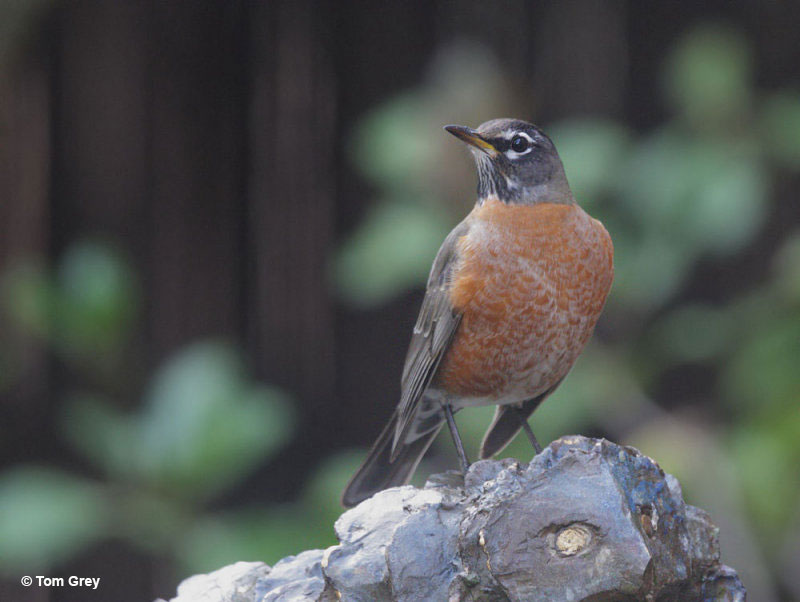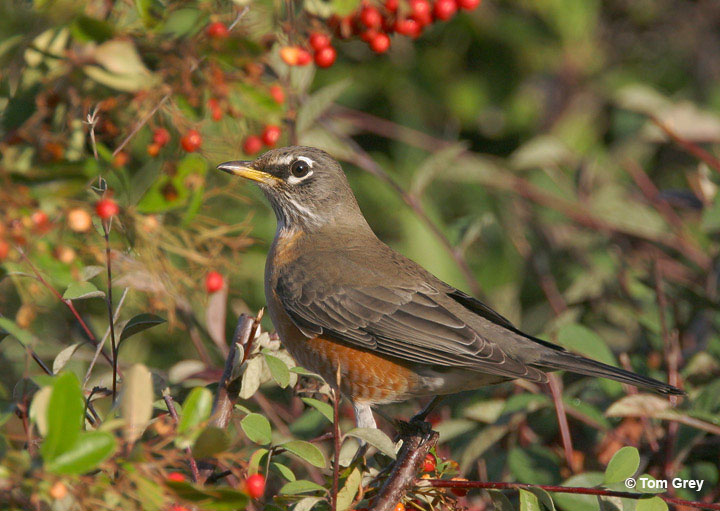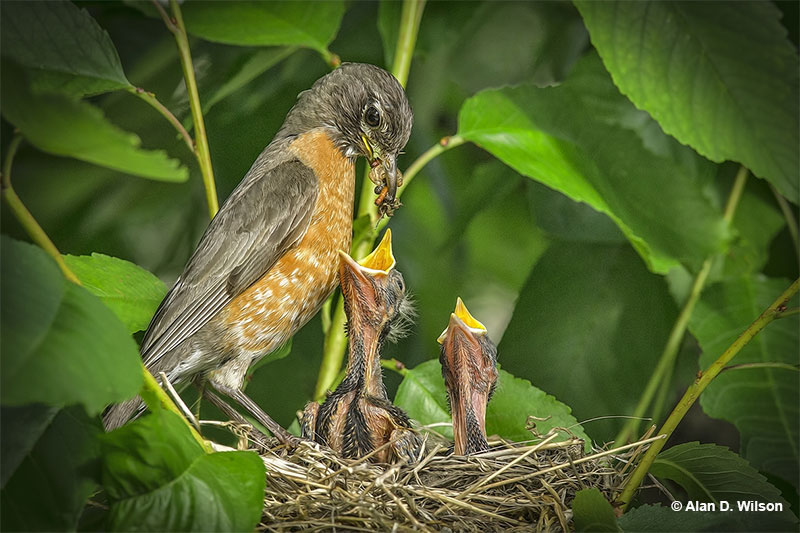
Robins are a common sight in many parts of the world, with their distinctive red breast and sweet melodic song making them a favorite amongst birdwatchers and nature enthusiasts. While many people are familiar with these feathered friends, there is much that remains unknown about their behavior and biology.
But are female robins identifiable? What are their lives like?
Let’s take a closer look at female robins and their role as mothers and partners.
Female vs Male Robin
American Robins have dark heads, warm orange underparts, and are gray-brown overall. A white patch under the tail and lower belly are easily visible in flight. These birds are 7.9 to 11.0 inches (20 to 28 centimeters) long and weigh 2.7 to 3.0 ounces (77 to 85 grams).
Female American Robins look very similar to breeding male robins. They have warm orange underparts and are gray-brown overall. A white patch under the tail and lower belly is easily visible in flight. However, females have paler heads. Their lighter heads contrast less with the gray back. They’re the same size and length and are the same weight.
See more: Birds that look like robins
There can be some noticeable differences between male and female robins. However, it’s important to note that American Robins can have individual plumage making it hard to tell if a bird is male or female.

Male and female robins are tricky to tell apart, but females have slightly duller plumage.
Duller Plumage
Female robins are duller than male robins. Males are known for their vibrant coloration, including the bright white eyering, vibrant yellow bill, white-collar decorations, and black-colored head. Compared to the characteristics listed previously, female robins appear to look faded or dull.
The rusty red breast is the best way to differentiate these two birds. Males will have a breast that is deeper than female robins. Female Robin breasts are paler and can look reddish-orange.
Additionally, male robins often have darker black tail feathers and wings, while female robins usually have charcoal-gray plumage. Females also have less contrast between their back feathers and head. Females are often duller than males because females must be better concealed to avoid predators and keep their eggs safe.
Female Robins Are Slightly Smaller
Female robins are slightly smaller than male robins. On average, female robins weigh 2.6 grams. However, it’s important to remember that even though male robins are usually larger, some females will become larger than specific males.
This is because some female robins can grow in size before they lay their eggs.

Female robin feeding the young
Territorial Behavior
American Robins are commonly associated with spring. Making them popular and innocent-looking birds. However, these birds can be pretty aggressive. Males are always eager to participate in combat and have even been known to kill their rivals.
Female robins will fiercely guard their offspring as well. Due to their very territorial nature, females will only wander into a male’s territory if it’s mating season.
Additionally, if you see two robins together, it’s most likely a female and a male.
How to Tell a Younger Robin’s Gender?
It’s difficult to identify young robins by gender when they are still in the nest. Juvenile American Robins have pale heads, pale breast feathers, and mottled brown markings.
The distinctive warm orange breasts and bellies will show through at this age.

© Alan D. Wilson
Lifecycle
American Robins have an average lifespan of 5 to 6 years. However, many of these birds die within their first year of life. The good news is, though, American Robins that make it past that point usually live for several years because they’ve learned the critical life skills needed to survive.
The oldest recorded American Robin lived to be at least 13 years and 11 months old. Robins that live in captivity have lived to be older than 17 years old.
Robins are not a species of bird that mates for life. A mated pair will stay together for the breeding season but don’t always stay with the same mate. However, there have been cases of a female and male who mated previously mating again after returning to the same territory.
Keep reading: Robin nest & eggs
It takes around 12 to 14 days after that last egg has been laid for American Robins to hatch. Female robins will lay 1 egg every day until the whole clutch is laid.
The clutch size is 5 to 6 eggs. Hatchlings will fledge the nest when they’re around 13 days old and become independent birds 10 to 15 days after fledging.
They’ll stay with their parents for 2 to 3 weeks after fledging, and the father will continue to feed them. The mother starts incubating a new brood of eggs at this time.
Frequently Asked Questions
How do you tell a male robin from a female?
Female robins are duller than male robins. Males are known for their vibrant coloration, including the bright white eyering, vibrant yellow bill, white-collar decorations, and black-colored head. Compared to the characteristics listed previously, Female robins appear to look faded or dull. The rusty red breast is the best way to differentiate these two birds. Males will have a breast that is deeper than female robins. Female Robin breasts are paler and can look reddish-orange.Additionally, male robins often have darker black tail feathers and wings, while female robins usually have charcoal-gray plumage. Females also have less contrast between their back feathers and head. Female birds are often duller than males because females must be better concealed to avoid predators and keep their eggs safe.
Additionally, female robins are slightly smaller than male robins. On average, female robins weigh 2.6 grams. It’s important to remember that even though male robins are usually larger, some females will become larger than specific males. This is because some female robins can grow in size while pregnant. However, you can still identify a pregnant female from a male because while her mass may increase, her tail and wings will still be smaller.
What color is a female robin?
Female American Robins have warm orange underparts and are gray-brown overall. A white patch under the tail and lower belly is easily visible in flight. However, females have paler heads. Their lighter heads contrast less with the gray back. They’re the same size and length and are the same weight.
Do female robins have eyerings?
Yes, female robins do have eyerings.
Why do you never see 2 robins together?
You never see 2 American Robins together because they’re very territorial birds. Female robins will only wander into a male’s territory if it’s mating season. This means if you see two American Robins together, it’s most likely a female and a male.
Conclusions
Even though male and female robins look similar at first glance, they have many differences in appearance and behavior.
Males are larger and have longer tails and wings, while females are smaller, have shorter tails and wings, have duller coloring, and aren’t as aggressive toward other birds.
However, it is tough to determine the gender of juvenile robins, and in the case of wild robins, the only ethical way to find it out is to observe their behavior.

